INTRODUCTION
Energy being intangible, is difficult to visualize. Hence, it needs a medium through which it can be visually evident. This project highlights gravitational potential energy using water as a medium.
Falling Water 2021 was born from the phenomenon of gravitational potential energy featured through river water. It operates on a combination of 2 systems, which are, pneumatic hydraulic energy and ram pumps. Pneumatic hydraulic energy is the energy stored in the form of pressurized fluid, to generate fluid power.
MAKING ENERGY VISIBLE
To kickstart the concept of making energy visible, a home device was to be chosen during the ‘Making Energy Visible’ Workshop. The device chosen by our group was a steam iron. The iron was deconstructed to understand its various parts, its working, the energy flow within and the expulsion of energy in the form of steam. Technical drawings were made which were then used to create an animation to display the energy flow in the iron.
Flow of Energy//Hot Plate Condensation was created by Aniket Sonawane, Michelle Bezik and Uri Lewis
PHASE I- THE HYDRO-PNEUMATIC WATERFALL
ENERGY PHENOMENA
Pneumatic hydraulic energy is driven by fluid power, which is the use of pressurized fluids to generate, control, or transfer power. Fluid power can be divided into two parts: hydraulics and pneumatics. Hydraulics stores energy in the form of gravitational potential energy. Gravitational potential energy is the energy stored in an object as the result of its vertical position or height. Pneumatics stores energy in the compression and pressurization of a gas. The energy stored in a compressed gas is equivalent to the work done to compress the gas.
HYDRO-PNEUMATIC WATERFALL
The Hydro-Pneumatic Waterfall was inspired by the Heron’s Fountain. It works on pneumatic hydraulic energy and our chosen phenomena of gravitational potential energy is highlighted through it. Since gravitational potential energy is directly proportional to height, the height of the top container from the floor was crucial. Higher the container, more the gravitational potential energy in the water.
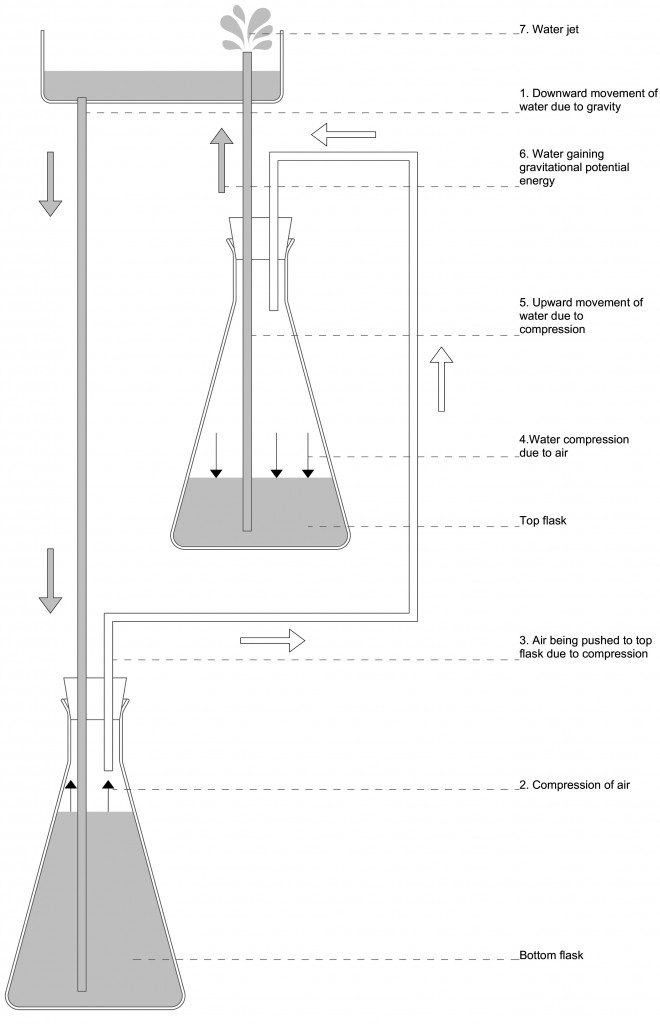
Diagrammatic Representation of The Heron’s Fountain
The first iteration of the Hydro-Pneumatic Waterfall was built to test the energy flow within the system and to gain data on incorporating the sensors into the final model.
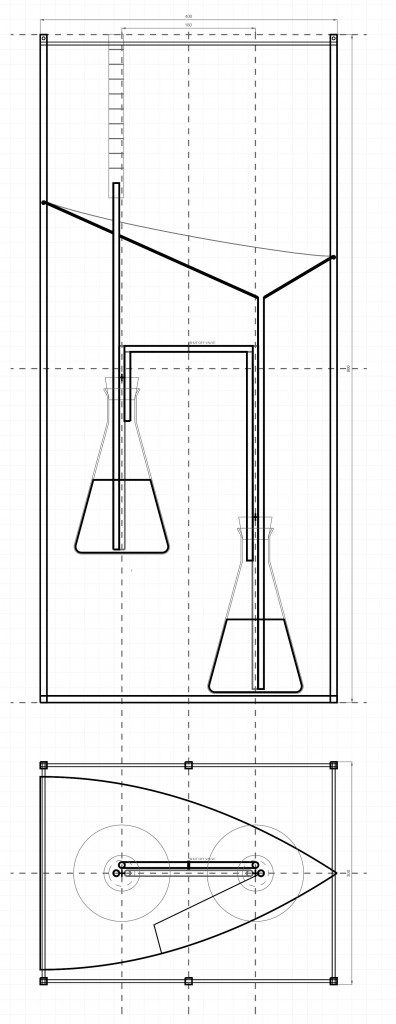
Plan and Section of First Iteration of the Hydro-Pneumatic Waterfall
FINAL DEVICE FOR PHASE I
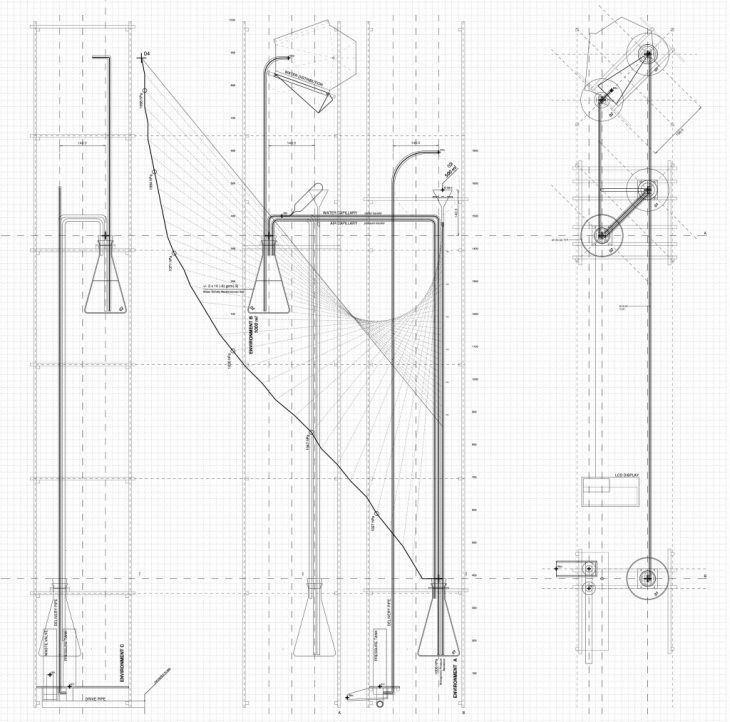
Final Plan and Section of the Hydro-Pneumatic Waterfall

Physical Model
Animation of the energy flow in the Hydro-Pneumatic Waterfall
Phase II- THE ONE3 HOUSE: FALLING WATER 2020
The brief of Phase II was to design one house for one person, for one year. The house also needs to incorporate the chosen phenomena.
SITE
The site chosen for out project was on the River Besòs in Barcelona, Spain. The specific site location was just before a dam in the river, so as to use the pressure and flow difference to our advantage.
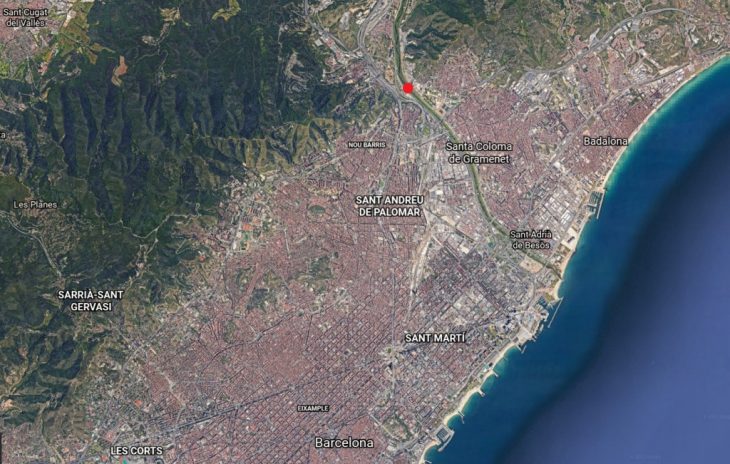
Site Location
GRAPHS SPECIFIC TO SITE
Data concerning temperature and precipitation in relation to the chosen site was collected and was translated into graphs. The graphs acted as a base during the design of the final house. They gave backing to design decisions pertaining to typology and location of spaces.
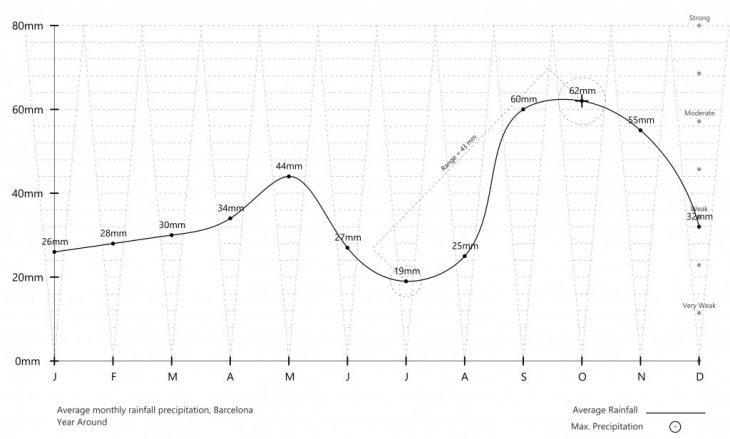
Rainfall: Annual Average
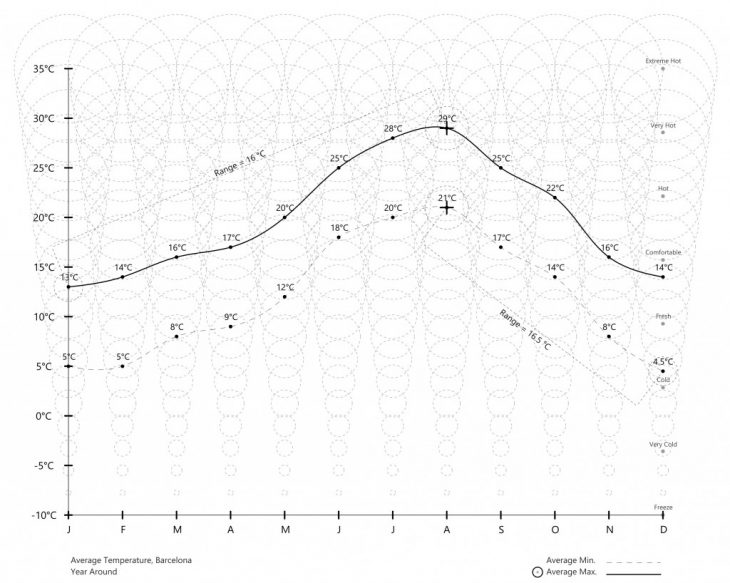
Temperature: Annual Average
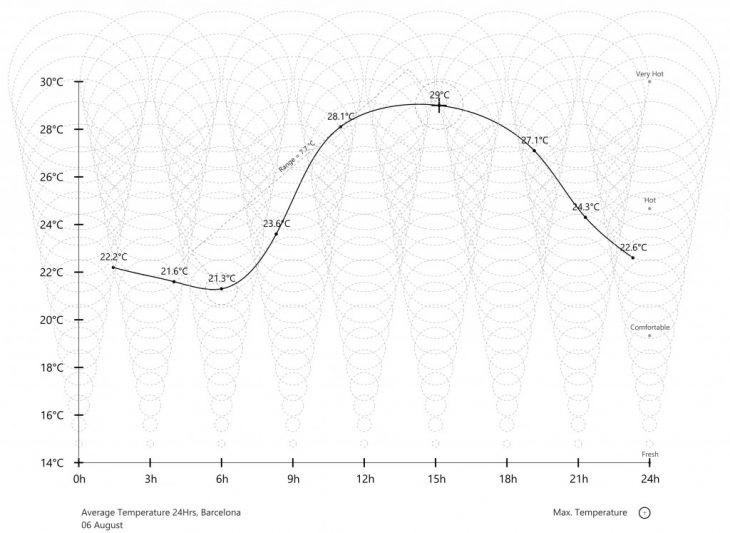
Temperature: 24 hour Average- 6th August
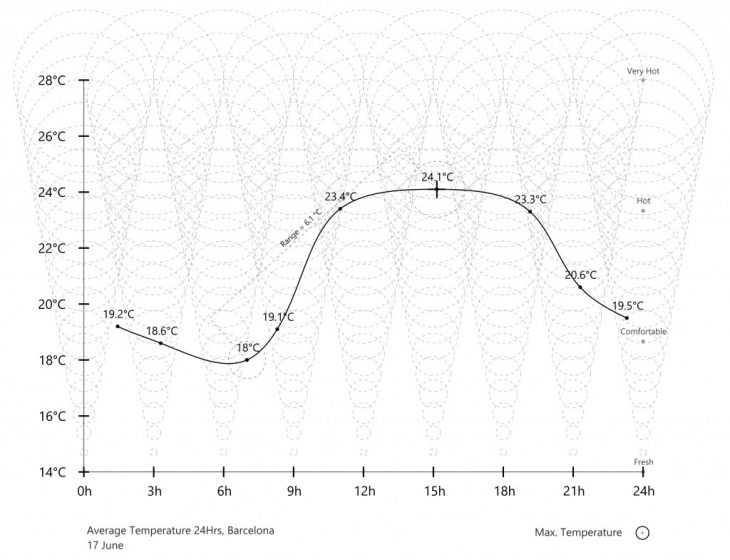
Temperature: 24 hour Average- 17th July
SENSING DEVICE
A sensing device was designed which could be left on site to capture environmental data. This device comprised of three major parts- the turbine, the gears and the rotary sensor. As the device was inserted into the river water, the flow of water turned the turbine, which was attached to a gear held together by a ribbed band. The gear was attached to a rotary sensor to collect data of the number of rotations. This was then converted to data to calculate the speed of the river.
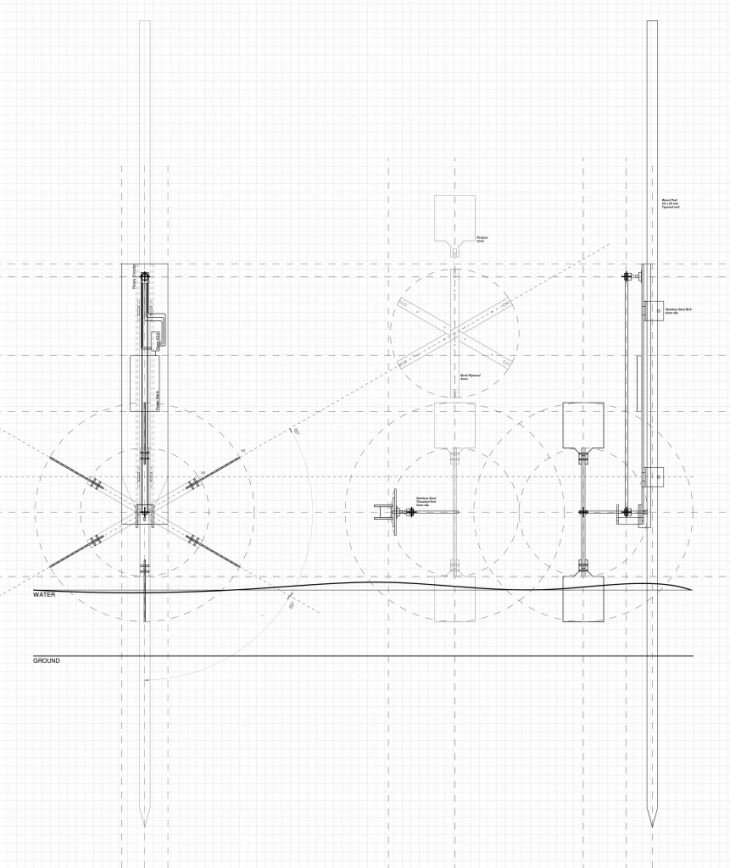
Sensing Device: Turbine with Rotary Sensor
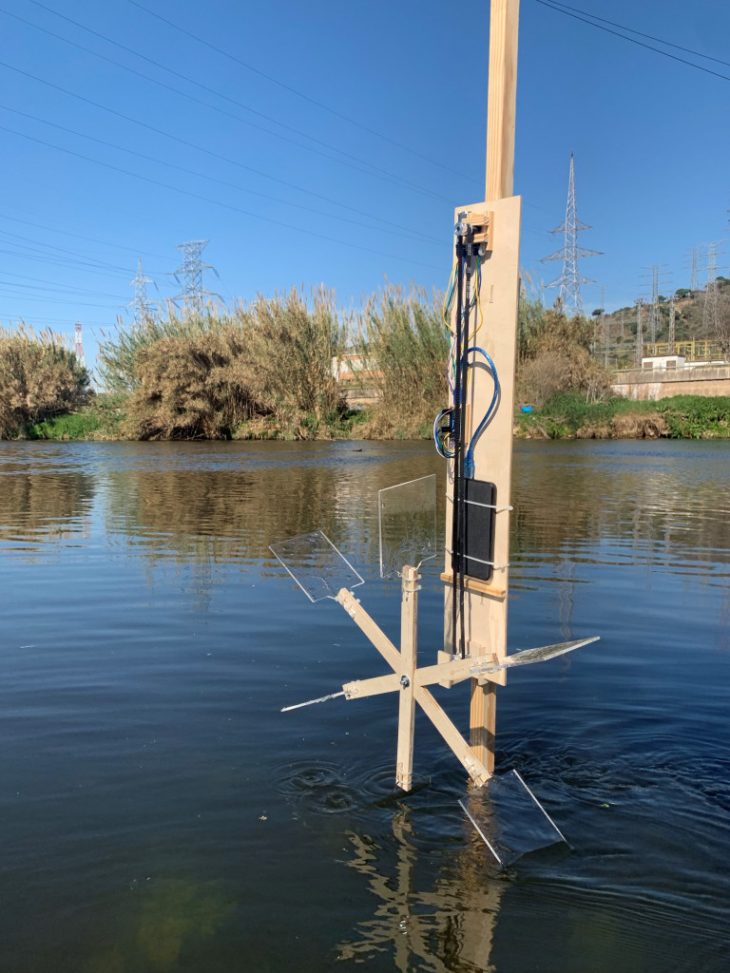
Sensing Device performing on Site
RAM PUMP
The ram pump uses no external source of power to pump water, the force of moving water from the river gives it the power it needs. The pump uses momentum of a relatively large amount of moving water to pump a relatively small amount of water upwards. It works on two one-way check valves. This would enable the river water to be pumped into the top tank and then be regulated within the house based on the workings derived from the Hydro-Pneumatic Waterfall Device from Phase I.
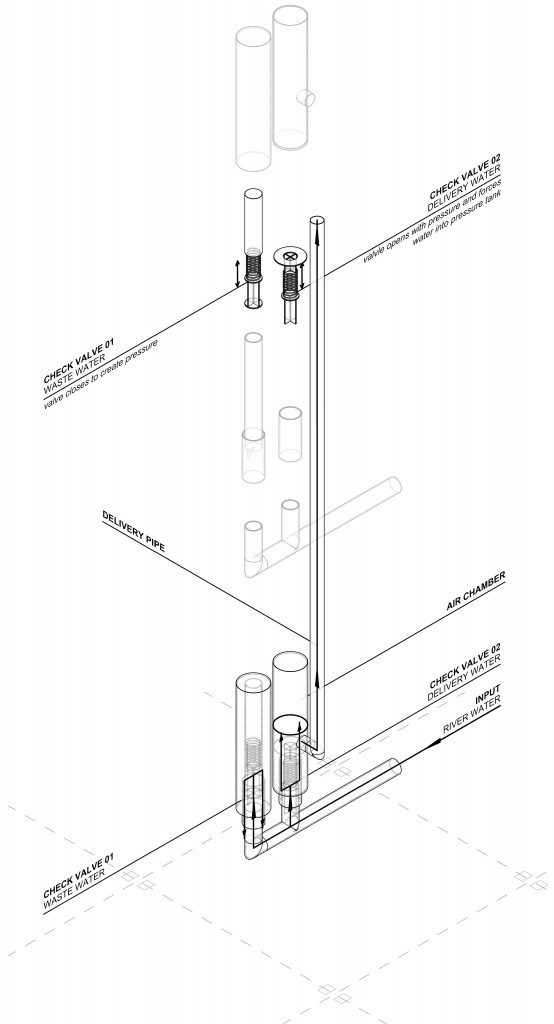
Working of the Ram Pump
FALLING WATER 2021
‘Do we need a permanent physical wall to define a space?’ is the question that led us to bring in the concept of using water as walls to define a space. Falling Water 2021 is all about creating a new lifestyle for the user. The design evolved vertically because the top water tank had to be placed at a height to maximize gravitational potential energy. The water collected into the tanks are the source for the water walls throughout the house. The spaces through the house were governed by activities during a 24 hour cycle of the user. The functions of the water walls are to define a space, to provide privacy and to cool a space depending on the 365 day cycle.
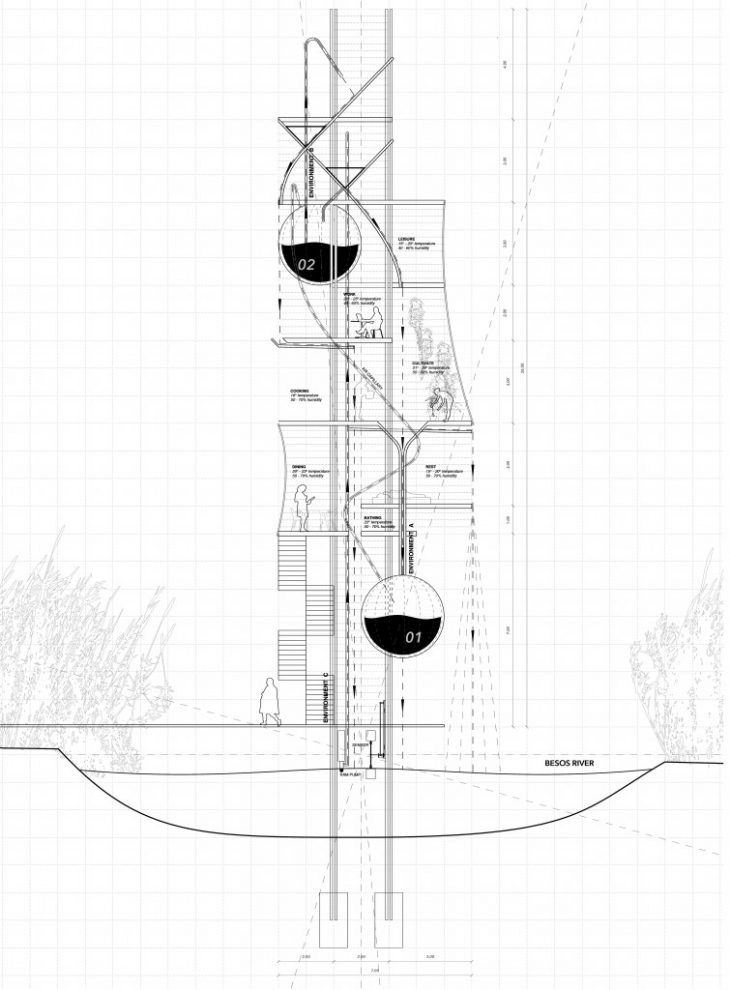
Section of Falling Water 2021
PHYSICAL MODEL- SCALE 1:10
A physical model was constructed out of CNC milled 4mm birch plywood. The joineries were designed such that no glue would be required and the elements would be interlocked and held together by wedges.

Axonometric View of the Physical Model
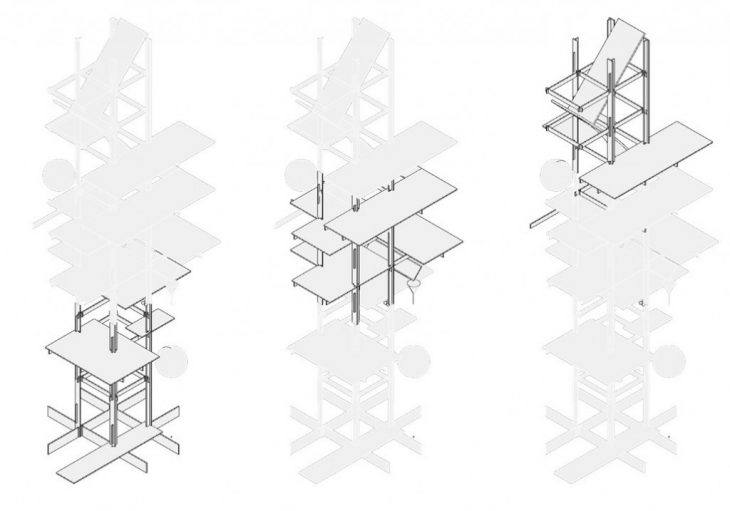
Model assembled in 3 parts

Beam to Column Joinery
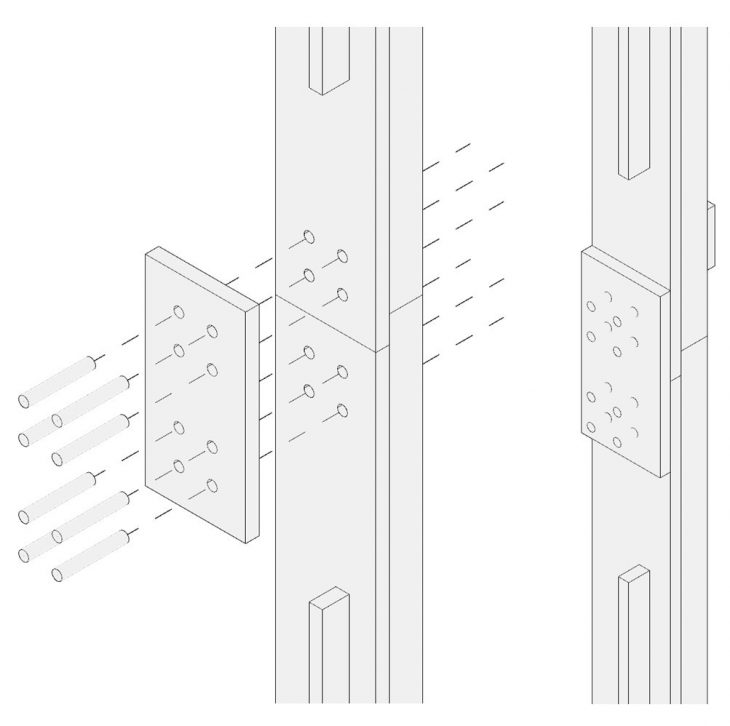
Column to column joinery
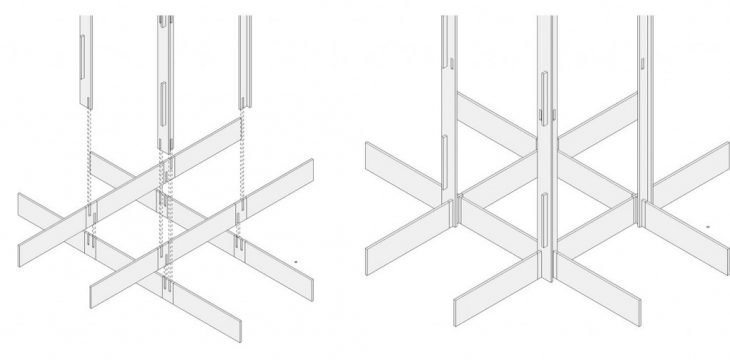
Column to Base Joinery
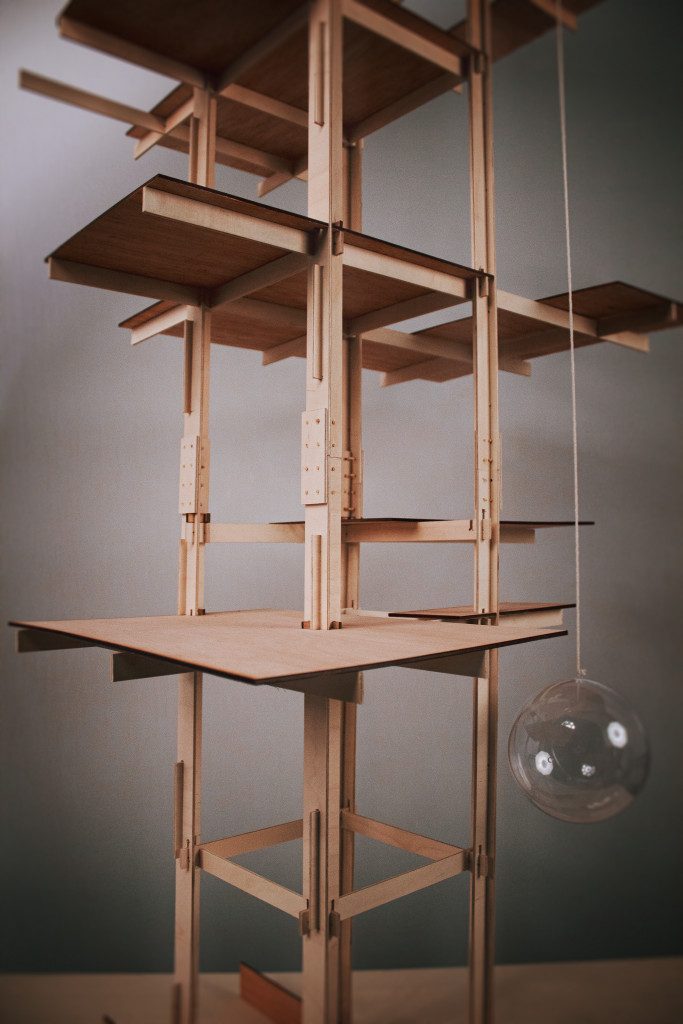
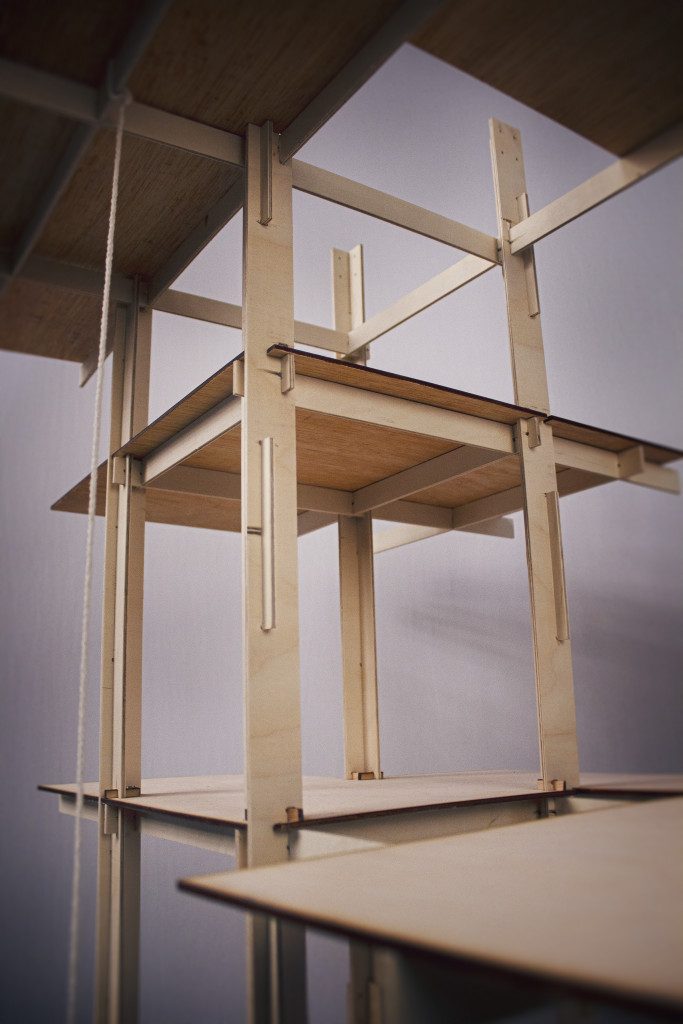
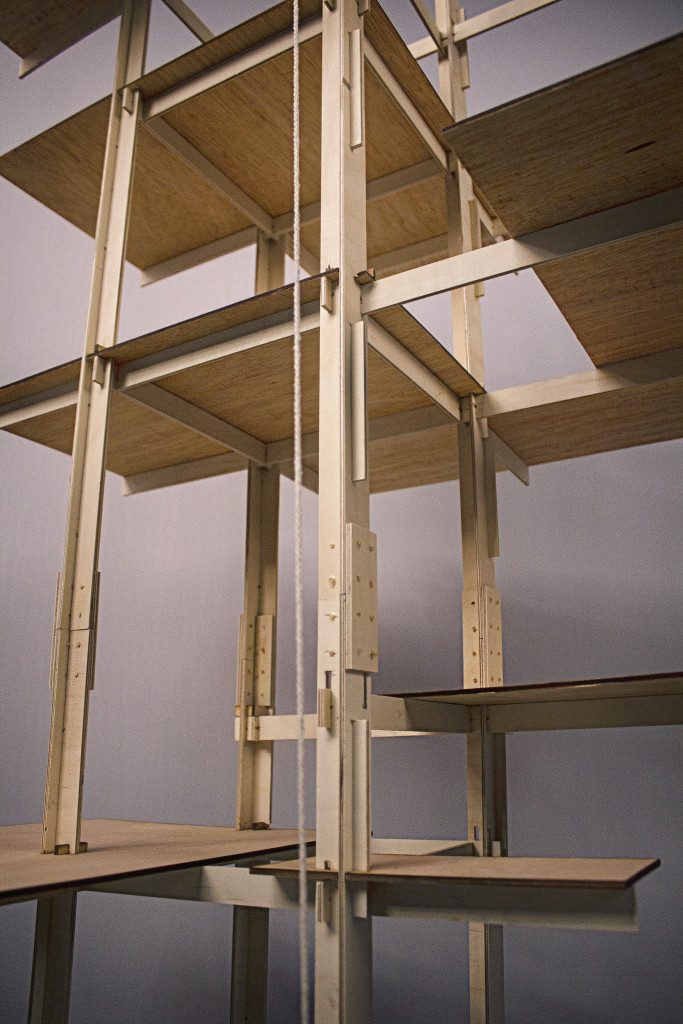
Animation of the energy flow in Falling Water 2021
Falling Water 2021 is a project of IAAC, Institute for Advanced Architecture of Catalonia developed in the Masters of Advanced Architecture 2020/21 by Students: Aniket Sonawane, Hairati Tupe, Michelle Bezik and Uri Lewis and Faculty Edouard Cabay, Peter Magnus and Stefana Zapuc.
